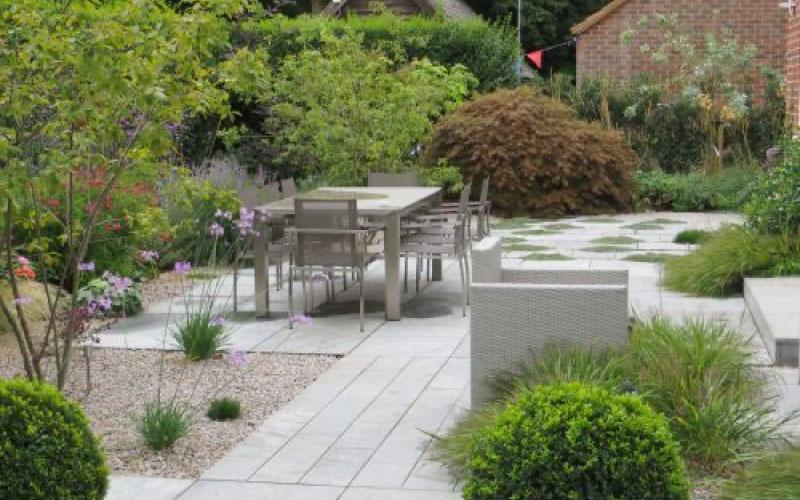
7 design principals for courtyard gardens
Accredited Contractor, The Garden Company shares with us 7 methods to overcome the challenges of designing small courtyard gardens.
Courtyards have a long history and a timeless appeal. Over the centuries, these enclosed outdoor spaces have provided communities with places to gather, rest, work and play. Nowadays, they are a popular feature in private gardens and public spaces too. Homeowners love the sense of sanctuary that courtyard gardens provide, and in public areas a courtyard can be a lovely place for a community to spend time together. In this blog post, I will share the design principles that I apply whenever working with such spaces. I will also outline two case studies which demonstrate both private and public use of a courtyard garden.
Courtyard gardens can present some significant design challenges. They may be small, may feel a little constrained, and obviously have restricted views out into the surrounding area. Light can be an issue too. However, with some simple design principles in mind, it is possible to transform such a space into a place for relaxation and retreat – or a lovely location for gathering people together. That is the precise reason why I love working on courtyard gardens. With some careful consideration, their transformation can be stunning.
How to design a courtyard garden
- Consider making the centre of the space the main focus. You can achieve this with a beautiful sculpture, a water feature, stylish seating or simply a lovely tree! Such a focal point aims to draw and direct the eye. It will be the first thing people pay attention to when entering the garden. It means that people slowly notice other features, rather than trying to absorb everything at once.
- Avoid narrow borders around the edges. Resist the temptation to push planting to the edges of the garden, which will accentuate the boundaries of the space. Instead, ‘keep the eye’ in the garden with deeper borders and additional features within the space, including possibly a central focal point. Fuller, more abundant planting schemes make it easier for you to attract birds, bees and butterflies to the space – turning your courtyard into a place of performing art. If there are views beyond the boundaries, try to link with those. For example, are there shapes of trees in the distance that you can mimic in the garden to link it to its surroundings? This is another way to ‘complicate’ the viewer’s perception of where the boundaries are and make the space feel larger.
- Treat the garden walls as extra space for planting. Clothe them in greenery with climbers and wall shrubs. This adds huge visual interest and is beneficial for wildlife too. When you are choosing your wall plants, remember to consider whether they will have to be ‘self-clinging’ or can be fixed to a trellis. It’s also important to know which direction your wall faces to help with plant choices.
- Be bold with hardscaping choices. It’s good to break up some of the hardscaping with details that signal a different use for an area. For example, a flagstone terrace may be inlaid with a brick path; or a dining section may be created through brick patterns. Gravel areas work well for softer ground cover plants. It is also vitally important to consider continuity from the house/building to the garden. Each material needs to be carefully chosen to be sympathetic to the period of the house and its architecture. Don’t use too many materials as this can create a cluttered, over-fussy feel. Three or less hard landscape materials is a good rule of thumb.
- Choose plants that add seasonal interest. Don’t fill the available space with evergreens which can become oppressive if overused. Instead, choose some specimen plants and underplant them with textural varieties to create long-lasting seasonal interest. Remember that courtyards tend to be more sheltered and therefore more tender plants are a possibility compared to exposed gardens. Some ephemeral plants can provide a striking, changing accent to a planting scheme.
- Pay attention to the light conditions. It may be harder to capture sunlight in a walled space/courtyard owing to more shadows being cast. When deciding on the overall design and location of particular ‘zones’, such as a dining area, this needs careful consideration. In addition, garden mirrors can be a great tool for reflecting natural light. With careful positioning, mirrors can help to make a courtyard garden look bigger and boost the impact of the plants/garden features.
Make the most of the sheltered conditions by adding fragrant planting. In a small walled space, the scent can be contained, adding a further sensory experience to the enjoyment of the garden. A personal favourite is Rhynchospermum jasminoides (Star Jasmine), a lovely climber with richly perfumed white flowers and evergreen foliage.
To read the full article click here.
